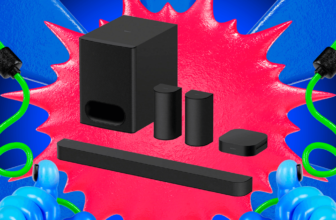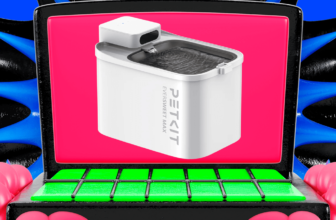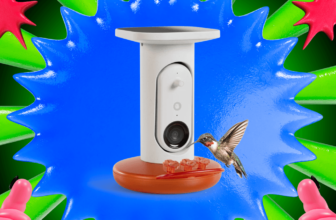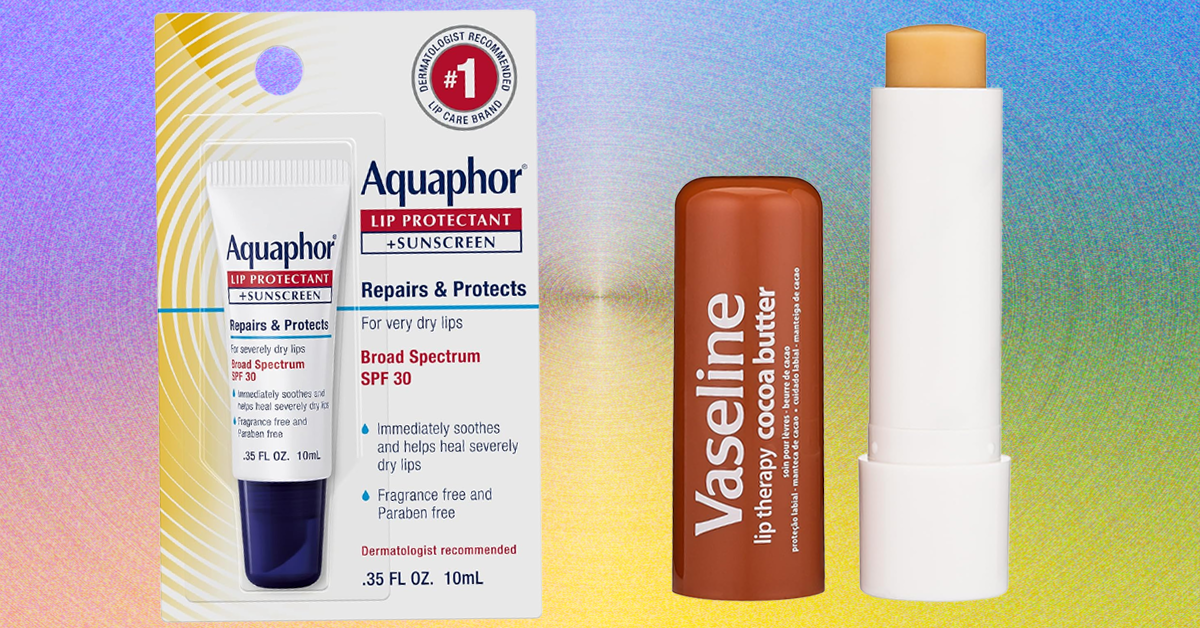
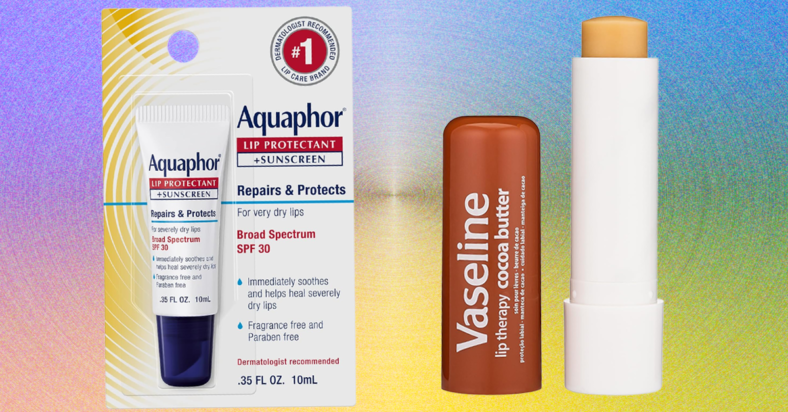
Honorable Mentions
Burt’s Bees Beeswax Lip Balm for $4: If you’re ingredient-conscious, Burt’s Bees has probably been in your tote at some point. The original formula blends beeswax, coconut oil, sunflower seed oil, and peppermint oil. No petroleum, no parabens, and you can find it just about everywhere. That said, the beeswax forms a solid barrier but is not the most hydrating, especially during the dead of winter. The balm coats but doesn’t penetrate, which means it won’t do much for lips that are already cracked. The peppermint oil can also be a little too spicy for sensitive lips. Still, if you’re in a pinch and standing in front of the CVS self-checkout, it’s a smarter purchase than Blistex (more on that later).
Glossier Balm Dotcom for $16: The Glossier Balm Dotcom walked so the Laneige Lip Sleeping Mask could run. It’s a multipurpose salve that blends lanolin, castor oil, and beeswax for ultimate moisture retention. Plus, it comes in a handful of sheer tints that play well with no-makeup makeup days. But the thick, waxy texture can feel a bit clumpy, especially if you’re layering over flaky lips.
Courtesy of Goop
Goop Beauty Nourishing Lip Repair Mask for $30: This buttery lip mask from Goop is loaded with ceramides to help restore your lip barrier, along with fig seed oil and acai fruit that smells just as tropical as it sounds. While it’s free from silicones, parabens, and synthetic fragrances, those botanical oils and fruit extracts can still trigger a reaction. Patch test first. Also, at $30 for just 0.3 fluid ounces, it’s not the most cost-effective balm on my list.
Omorovicza Budapest Perfecting Lip Balm for $46: Omorovicza’s Perfecting Lip Balm’s texture leans gritty, almost like a lip polish or a micro-exfoliator. There are some goodies in here, like hyaluronic acid and omega fatty acids. But, there are also some unnecessary (potentially irritating) extras—eucalyptus oil, parfum, and benzyl alcohol.
Avoid These Lip Balms
Blistex Lip Medex 3-Pack for $6: It gives you that instant tingle thanks to menthol and camphor, plus a cocktail of synthetic flavors and fragrances, but that sting is a red flag. A general note: “Medicated” lip balms often do more harm than good.
Carmex Classic Lip Balm 3-Pack for $3: For similar reasons to Blistex, skip Carmex. It contains camphor and benzocaine, which are ingredients that can irritate the skin and make chapped lips worse over time.
FAQs
What Causes Chapped Lips?
There are a lot of triggers, and here are some of the most common causes of chapped lips:
- Cold weather and dry air: Both cold and dry air zap moisture from your skin and stiffen keratin, which is the protein that keeps your lips moisturized.
- Lip licking: The more you lick, the drier they get. Licking your lips breaks down your lip’s natural barrier, leading to irritation and even hyperpigmentation.
- Allergic reactions: Some lip balms contain ingredients that trigger allergic reactions, making dryness and peeling worse. Usual suspects include castor oil, fragrance, dyes, and preservatives.
- Sun exposure: Your lips are thinner and have less pigment than the rest of your skin, which means less protection from UV rays. Unprotected exposure can lead to painful dryness or precancerous spots called actinic cheilitis.
- Tobacco smoke: If you smoke, your lips are at a higher risk for a condition called glandular cheilitis, which causes swelling, rough texture, and cracks. It can also raise your risk for infections and lip cancer.
- Medications: Certain meds come with dry mouth as a side effect, including but not limited to retinoids, antihistamines, antidepressants, and benzodiazepines.
- Underlying conditions: Autoimmune conditions like lupus, eczema, or lichen planus can all show up on your lips first. If your symptoms don’t budge after trying the usual suspects, talk to your dermatologist.
Ingredients to Look for (and Avoid)
Here’s what to look for on the label:
- Emollients: These are moisturizing ingredients that help repair and smooth flaky, chapped lips. Some common ones include:
1. Castor oil: Thick, nourishing, and packed with ricinoleic acid that helps smooth rough texture. It is ever so slightly comedogenic, meaning it can clog pores.
2. Cocoa butter or shea butter: These rich butters toe the line between emollient and occlusive. They hydrate and help rebuild the lip’s natural barrier without clogging pores.
3. Coconut oil: Naturally anti-inflammatory, but if you’re acne-prone, it can be too much for the skin around your lips.
4. Jojoba oil: Mimics the skin’s natural sebum. Super lightweight, non-greasy, and unlikely to clog pores. - Occlusives: These ingredients form a protective barrier to seal in moisture and block out environmental aggressors. Look for petroleum jelly (aka petrolatum), a tried-and-true moisture sealant, or beeswax for a natural alternative.
- Humectants: These ingredients attract water to keep lips plump and hydrated; they work best when paired with emollients and occlusives to trap moisture. The standout is hyaluronic acid, which hydrates without leaving a greasy residue, but you’ll also benefit from glycerin, aloe vera, or honey.
- Antioxidants: Ingredients like vitamin E, vitamin C, niacinamide, and polyphenols help defend against free radicals and aid in repairing damaged skin cells over time.
- SPF protection: Lips are especially vulnerable to sun damage, so opt for mineral sunscreens utilizing zinc oxide or titanium dioxide. They’re effective, gentle enough for sensitive skin, and don’t leave a white cast.
Here’s what to avoid:
- Synthetic fragrances and flavors: Yummy scents, including but not limited to peppermint, cinnamon, and citrus, can irritate your lips.
- Menthol, camphor, and other cooling agents: These make dryness worse over time.
When to See a Dermatologist
According to the American Academy of Dermatology, if your lips are still chapped after two to three weeks of consistent balm use, you should consult your dermatologist. A professional can help you figure out if there’s something more serious going on—like an allergic reaction or fungal infection—and treat it before it exacerbates.
Power up with unlimited access to WIRED. Get best-in-class reporting that’s too important to ignore for just $2.50 $1 per month for 1 year. Includes unlimited digital access and exclusive subscriber-only content. Subscribe Today.



